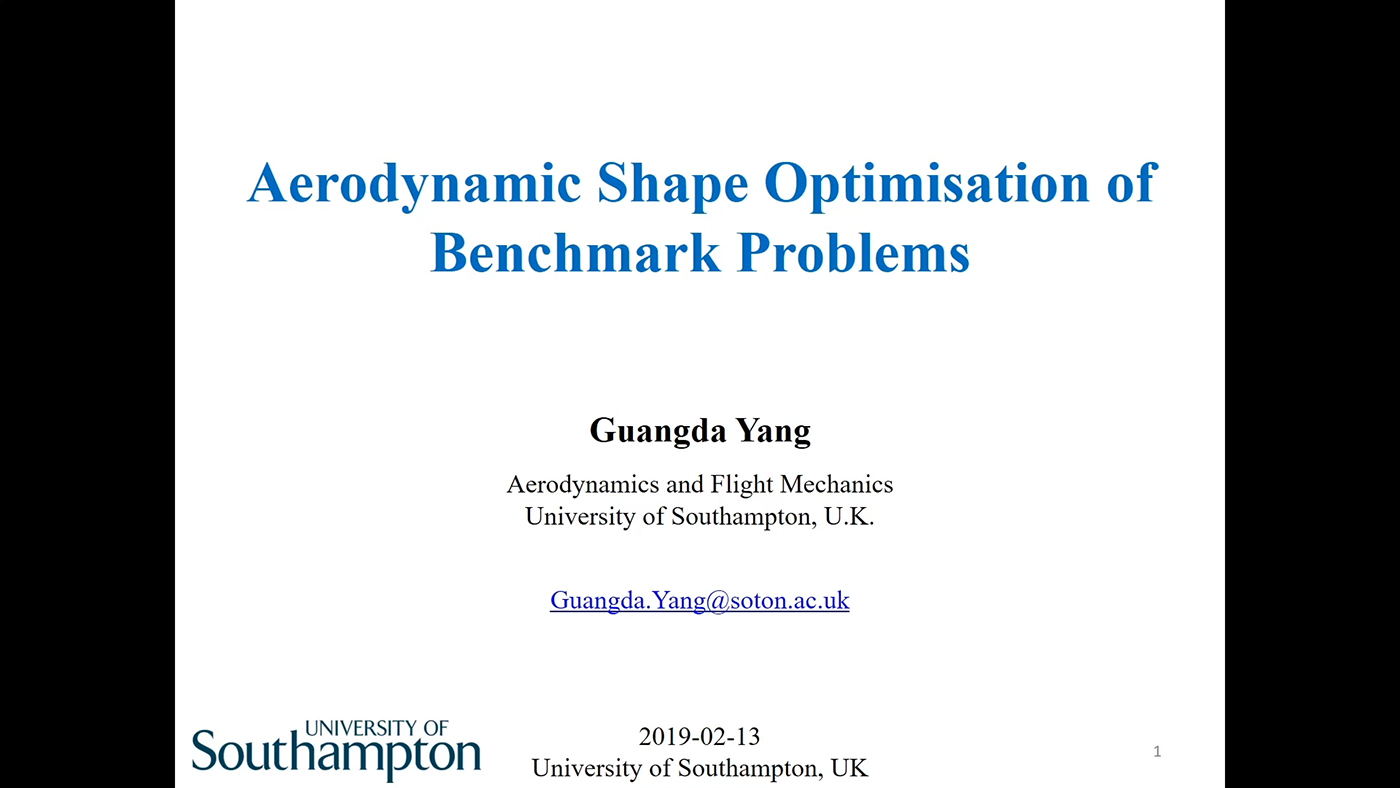Aerodynamic Shape Optimisation of Benchmark Problems by Guangda Yang (Southampton)
Duration: 21 mins 49 secs
Share this media item:
Embed this media item:
Embed this media item:
About this item

| Description: |
Talk given by Mr Guangda Yang (AFM group, University of Southampton) at the Aerodynamics and Flight Mechanics group, University of Southampton, on 13 February 2019, as part of the Southampton/AFM seminar series.
The talk presents results from a series of benchmarking problems in the optimisation of aerodynamic drag reduction. |
|---|
| Created: | 2019-02-21 10:23 |
|---|---|
| Collection: | UKFN_Southampton_AFM |
| Publisher: | University of Cambridge |
| Copyright: | Mr Guangda Yang |
| Language: | eng (English) |
| Keywords: | optimisation; benchmarking; Drag reduction; aerofoils; SU2; FALCon; Adjoint method; |
| Abstract: | The uncertainty of fuel supply and environmental impact of carbon emissions require aircraft designers to improve the aerodynamic efficiency. To this end, drag reduction remains a critical area of research for the aviation industry. With the rapid development of computational fluid dynamics (CFD), designers are enabled to perform numerical optimisation to increase the aerodynamic performance. The AIAA aerodynamic design optimisation discussion group (ADODG) has established a series of benchmarking problems with increasing complexity, ranging from single-point aerofoil optimisation to multi-point wing-body-tail optimisation. In this presentation, we present the results obtained for the first three optimisation cases. An open-source suite, SU2, is applied to perform the aerodynamic optimisations with the aid of adjoint method, which overcomes the curse of dimensionality with increasing design variables. For two aerofoil problems (NACA0012 and RAE2822), the work primarily investigates the influence that numerical parameters have on the optimal solutions. For the case of wing twist optimisation, an efficient multi-fidelity aerodynamic solver, FALCon, is also employed. It is demonstrated that the multi-fidelity approach effectively solves the problem by recovering the elliptical lift distribution, and also greatly reduces the computational cost compared with SU2. |
|---|---|
Available Formats
| Format | Quality | Bitrate | Size | |||
|---|---|---|---|---|---|---|
| MPEG-4 Video | 1280x720 | 2.16 Mbits/sec | 354.62 MB | View | Download | |
| MPEG-4 Video | 640x360 | 752.89 kbits/sec | 120.31 MB | View | Download | |
| WebM | 1280x720 | 1.29 Mbits/sec | 212.52 MB | View | Download | |
| WebM | 640x360 | 368.58 kbits/sec | 58.94 MB | View | Download | |
| iPod Video | 480x360 | 520.51 kbits/sec | 83.17 MB | View | Download | |
| MP3 | 44100 Hz | 249.75 kbits/sec | 40.21 MB | Listen | Download | |
| Auto * | (Allows browser to choose a format it supports) | |||||

